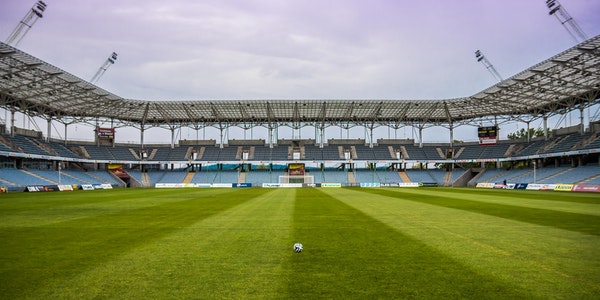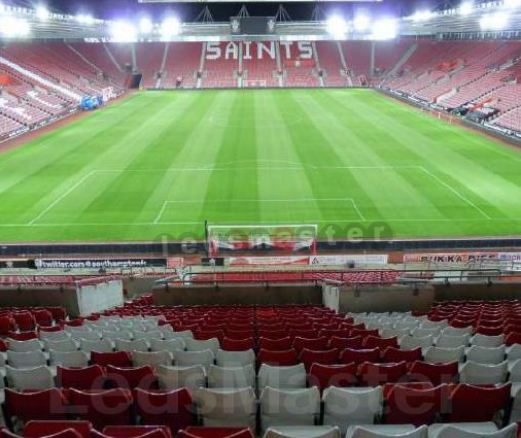- Smart Control and Monitoring
- Real-Time Adjustments
Dynamic Lighting Control: IoT enables real-time adjustments to lighting levels, colors, and patterns based on environmental conditions, event schedules, or specific requirements (e.g., sports matches, concerts).
Energy Optimization: Automated adjustments help optimize energy use by dimming or brightening lights as needed, reducing operational costs and environmental impact.
- Remote Management
Centralized Control: IoT platforms allow for centralized control and monitoring of all lighting fixtures across the stadium. This simplifies management tasks and ensures uniformity in lighting throughout the venue.
Maintenance Alerts: IoT sensors can detect issues such as bulb failures or energy inefficiencies, sending alerts for proactive maintenance and minimizing downtime.
- Enhanced Fan Experience
- Dynamic Lighting Effects
Entertainment Value: IoT-enabled LED lighting systems can create dynamic lighting effects and immersive experiences during pre-game shows, halftime events, or special ceremonies. This enhances the overall fan experience and engagement.
Customization: Lighting can be synchronized with music, crowd noise, or other events, creating interactive and memorable experiences for spectators.
- Personalized Interaction
Mobile Apps and Interactivity: IoT integration allows spectators to interact with lighting effects through mobile apps or wearable devices. For example, fans might change the color of stadium lights or participate in interactive games via their smartphones.
- Operational Efficiency
- Energy Management
Energy Analytics: IoT platforms provide detailed energy consumption data and analytics. Stadium operators can analyze usage patterns, identify inefficiencies, and implement strategies to further optimize energy consumption.
Demand Response: IoT systems can participate in demand response programs by adjusting lighting levels during peak energy demand periods, contributing to grid stability and cost savings.
- Predictive Maintenance
Condition Monitoring: IoT sensors collect real-time data on lighting performance, temperature, and other metrics. Predictive analytics can forecast maintenance needs, allowing for proactive repairs and extending the lifespan of lighting fixtures.
- Safety and Security
- Emergency Response
Instantaneous Response: IoT-enabled lighting systems can automatically adjust to emergency situations by providing emergency lighting pathways or enhancing visibility for evacuation procedures.
Integration with Security Systems: Lighting can be integrated with security cameras and alarms, enhancing overall safety and security within the stadium.
- Sustainability and Environmental Impact
- Green Initiatives
Optimized Energy Use: IoT integration helps stadiums achieve sustainability goals by optimizing energy use and reducing carbon emissions associated with lighting operations.
Resource Efficiency: Smart lighting controls minimize light pollution and unnecessary energy consumption, contributing to environmental conservation efforts.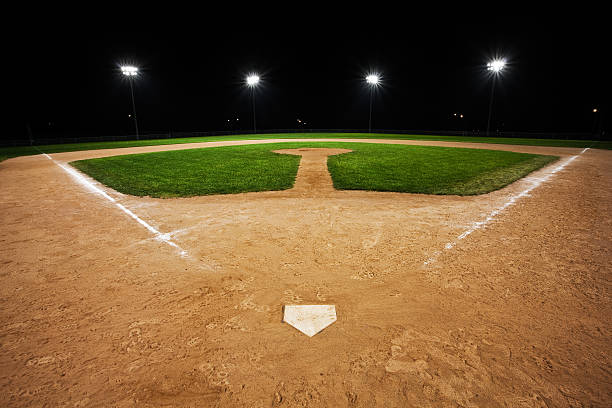
- Compliance and Reporting
Regulatory Requirements: IoT platforms facilitate compliance with energy efficiency standards and reporting requirements. Data-driven insights support documentation of sustainable practices and support for green certifications.
- Future Scalability and Innovation
- Technological Advancements
Integration with Emerging Technologies: IoT integration lays the foundation for future innovations, such as AI (Artificial Intelligence) and machine learning applications in lighting management and optimization.
Scalable Solutions: Scalable IoT platforms accommodate future expansions and upgrades, ensuring that stadiums can adapt to evolving technological trends and fan expectations.
IoT integration enhances LED stadium lighting systems by enabling smart control, real-time adjustments, enhanced fan experiences, operational efficiencies, and sustainability benefits. By leveraging IoT technology, stadiums can optimize energy use, improve safety and security, and deliver engaging and memorable experiences for spectators. The combination of LED lighting and IoT represents a powerful solution for modern sports venues seeking to enhance performance, efficiency, and sustainability while providing an immersive and dynamic environment for fans.
2. Automated control and customization
The automation and customization capabilities of LED (Light Emitting Diode) stadium lighting through advanced control systems enable precise management, efficiency gains, and enhanced experiences for both spectators and operators. Here’s an overview of how automated control and customization benefit LED stadium lighting systems:
- Automated Lighting Control
- Scheduled Operation
Pre-Programmed Schedules: LED lighting systems can be programmed to operate on specific schedules based on event timings, daily routines, or seasonal changes.
Energy Efficiency: Automated scheduling ensures lights are only active when needed, reducing unnecessary energy consumption during non-operational hours.
- Motion and Presence Detection
Smart Sensors: IoT-enabled sensors detect motion and presence within designated areas of the stadium. Lights automatically adjust brightness levels or turn on/off based on real-time occupancy data.
Energy Savings: This feature minimizes energy wastage in less frequented areas, contributing to overall energy efficiency and cost savings.
- Dynamic Lighting Effects
- Color and Intensity Adjustments
Customizable Scenes: LED systems support dynamic changes in color temperature, intensity, and patterns to suit different events, seasons, or specific visual needs.
Enhanced Ambiance: Customizable lighting effects create immersive experiences during pre-game shows, halftime events, or concerts, enhancing the overall atmosphere and fan engagement.
- Interactive Features
Audience Interaction: Integration with mobile apps or wearable devices allows spectators to interact with stadium lighting. Fans can control aspects such as color schemes or participate in synchronized light shows, fostering greater audience participation and excitement.
- Environmental Adaptability
- Adaptive Lighting Conditions
Weather and Daylight Integration: Sensors can adjust lighting levels based on natural daylight conditions or weather changes, maintaining optimal visibility and reducing energy consumption.
Efficient Use of Resources: Adaptive lighting ensures that the stadium maintains comfortable and safe conditions while minimizing environmental impact and operational costs.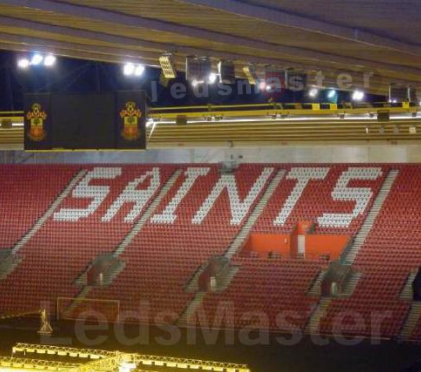
- Safety and Security Enhancements
- Emergency Response Capabilities
Instantaneous Adaptation: Automated systems can respond instantly to emergency situations by activating emergency lighting pathways or adjusting overall stadium illumination for enhanced visibility.
Integration with Security Systems: Lighting automation can be integrated with security alarms and surveillance systems to enhance safety protocols and ensure quick responses to potential threats.
- Operational Efficiency
- Predictive Maintenance
Condition Monitoring: Automated systems collect real-time data on lighting performance and operational metrics. Predictive analytics identify potential issues before they escalate, enabling proactive maintenance and minimizing downtime.
Extended Lifespan: Proactive maintenance practices based on automated monitoring contribute to prolonged fixture lifespan and reduced lifecycle costs.
- Integration with Building Management Systems (BMS)
- Centralized Control
Unified Management: Integration with BMS allows centralized control of all building systems, including lighting, HVAC, and security. This streamlines operations, enhances efficiency, and improves overall facility management.
Data-driven Insights: BMS integration provides comprehensive data analytics for informed decision-making, optimizing resource allocation and supporting sustainable practices.
Automated control and customization capabilities enhance LED stadium lighting systems by providing efficient operation, dynamic lighting effects, enhanced safety features, and improved spectator experiences. By leveraging advanced technologies such as IoT and BMS, stadiums can achieve significant energy savings, operational efficiencies, and sustainability goals. These capabilities not only optimize resource use but also create memorable experiences for fans, making automated LED lighting control a cornerstone of modern sports venue management and design.
B. High-Quality Light Output
1. Color temperature and CRI (Color Rendering Index)
Color temperature and CRI (Color Rendering Index) are crucial factors in LED (Light Emitting Diode) stadium lighting design, influencing visibility, atmosphere, and overall user experience. Here’s an exploration of their significance:
- Color Temperature
- Definition and Measurement
Kelvin Scale: Color temperature is measured in Kelvin (K) and defines the color appearance of the light emitted by the LED fixture.
Warm vs. Cool: Lower Kelvin temperatures (e.g., 2700K-3000K) produce warm white or yellowish light, resembling incandescent bulbs. Higher Kelvin temperatures (e.g., 5000K-6500K) produce cool white or bluish light, resembling daylight or overcast sky.
- Application in Stadiums
Event Adaptability: Stadiums can adjust color temperature based on the type of event. For daytime events, cooler temperatures enhance visibility and mimic daylight conditions. Warmer temperatures may be preferred for evening events to create a more inviting atmosphere.
- Spectator and Player Benefits
Visibility: Optimal color temperature ensures clear visibility of players, the ball, and other objects on the field or court, enhancing the viewing experience for spectators.
Atmosphere: Different color temperatures can influence the ambiance of the stadium, affecting mood and perception among spectators and players alike.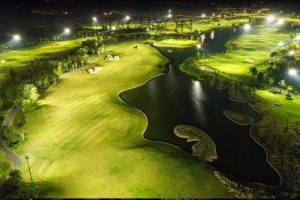
- Color Rendering Index (CRI)
- Definition and Importance
Measurement of Color Accuracy: CRI measures how accurately a light source renders colors compared to natural sunlight (which has a CRI of 100).
Impact on Perception: Higher CRI values (typically 80 and above) indicate better color accuracy, allowing viewers to discern true colors of jerseys, logos, and signage within the stadium.
- Application in Stadiums
Enhanced Visual Clarity: High CRI LEDs ensure that players can distinguish between colors accurately, aiding in decision-making and performance during gameplay.
Broadcast Quality: For televised events, high CRI ensures that colors are faithfully reproduced on screen, enhancing the viewing experience for audiences watching from home.
- Considerations for Lighting Design
Balancing Efficiency and Color Quality: LED fixtures often balance high efficiency with good CRI. Designers prioritize both aspects to ensure energy savings while maintaining optimal color rendering for critical applications like sports venues.
Customization: Advanced LED systems allow for customization of CRI values and color temperatures, enabling precise adjustments tailored to specific sports, events, or visual requirements.
- Integration and Smart Control
- IoT and Smart Systems
Dynamic Adjustments: IoT integration allows for real-time adjustments of color temperature and CRI based on environmental conditions, time of day, or specific event requirements.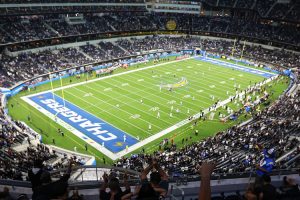
Enhanced Flexibility: Smart control systems enable stadiums to create dynamic lighting effects, change lighting scenes instantly, and enhance overall user experience through personalized lighting environments.
Color temperature and CRI play pivotal roles in optimizing LED stadium lighting for visibility, atmosphere, and color accuracy. By carefully selecting and integrating these parameters, stadiums can enhance spectator experiences, support player performance, and meet broadcasting standards. The flexibility afforded by LED technology and smart control systems allows stadiums to adapt lighting conditions to varying events and environmental factors, ensuring optimal visual clarity and mood enhancement for all stakeholders involved in the sporting event experience.
2. Flicker-free performance
Flicker-free performance is a critical aspect of LED (Light Emitting Diode) stadium lighting systems, ensuring consistent illumination and minimizing potential health and performance issues. Here’s an overview of why flicker-free performance is important and how it is achieved in LED lighting:
- Understanding Flicker
- Definition
Flicker: Flicker refers to rapid fluctuations in light output, usually at frequencies that are imperceptible to the human eye but can still affect visual comfort and performance.
Causes: Flicker in traditional lighting sources often results from alternating current (AC) power supplies or inadequate driver designs.
- Effects
Visual Discomfort: Flickering lights can cause discomfort, eyestrain, headaches, and even migraines for some individuals.
Performance Issues: In sports venues, flicker can affect player performance by impairing visibility, depth perception, and reaction times.
- Achieving Flicker-Free LED Lighting
- Direct Current (DC) Power Supply
Conversion Process: LEDs operate on direct current (DC), so power supplies convert AC to DC to eliminate flicker associated with AC power frequencies (typically 50 Hz or 60 Hz).
Smooth Operation: DC-powered LEDs provide stable and consistent light output, ensuring flicker-free performance throughout their operational lifespan.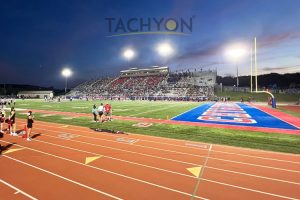
- High Frequency Drivers
Technology Advancements: Advanced LED drivers operate at high frequencies (usually above 20,000 Hz) to ensure smooth current flow and eliminate perceptible flicker.
Dimming Compatibility: Dimmable LED fixtures use pulse-width modulation (PWM) techniques in high-frequency drivers to maintain flicker-free dimming capabilities.
- Importance in Stadiums
- Visual Comfort
Enhanced Experience: Flicker-free LED lighting enhances spectator comfort by providing uniform and steady illumination during events.
Broadcast Quality: For televised events, flicker-free lighting ensures high-quality video recordings without the interference of flickering lights.
- Player Performance
Optimal Visibility: Athletes rely on clear and consistent lighting to perform at their best. Flicker-free LED lighting supports accurate vision and reaction times, crucial for competitive sports.
- Regulatory Standards and Compliance
- Certification Requirements
Industry Standards: Regulatory bodies often mandate flicker performance standards for lighting products, ensuring they meet minimum flicker-free criteria.
Compliance: LED fixtures designed for stadiums adhere to these standards to ensure safe and reliable operation, meeting the needs of both spectators and players.
- Technological Advancements
- Continuous Improvement
Research and Development: LED manufacturers continually innovate to improve flicker-free performance through better driver designs, enhanced power supply technologies, and stricter quality control measures.
User Feedback: Feedback from stadium operators, lighting designers, and end-users drives advancements in flicker-free LED technology, ensuring it meets evolving expectations and requirements.
Flicker-free performance is essential for LED stadium lighting systems to provide consistent, comfortable, and visually optimal illumination. By eliminating flicker through DC power supplies, high-frequency drivers, and adherence to regulatory standards, LED fixtures enhance spectator experiences, support player performance, and maintain broadcast quality in sports venues. Continuous technological advancements further ensure that LED stadium lighting remains a reliable and effective solution for modern sports facility design and management.
(To Be Continued)

